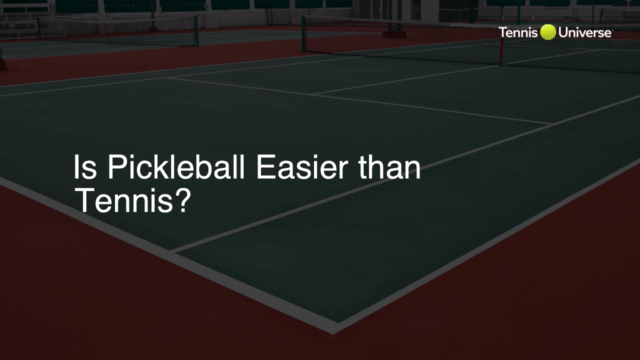Tennis balls are made through a multi-step process that begins with molding two rubber halves. The rubber material is first treated with chemicals to enhance its properties, and then it is pressurized with air to create the desired bounce. After molding, the two halves are bonded together using heat. The bonded rubber ball is then covered with felt, which is typically made from a blend of wool and nylon. This felt layer is glued and heat-sealed to the rubber ball, giving it its recognizable texture and optimizing its aerodynamic performance. Finally, the tennis balls are packaged and ready for distribution.
Introduction to Tennis Ball Manufacturing
Understanding how tennis balls are made can provide insight into their performance on the court and their interaction with your tennis racket. This article takes you through the step-by-step process, highlighting the materials and techniques used in tennis ball production.
Rubber Core Preparation
A critical component of the tennis ball is its rubber core. The performance and durability of the ball depend heavily on this vital layer.
Step 1: Mixing and Treating the Rubber
The core of a tennis ball is made from a unique blend of natural and synthetic rubber compounds. The rubber mixture undergoes a chemical treatment process, which includes the addition of sulfur and other additives to enhance its properties, such as elasticity and durability.
Step 2: Molding
Once the rubber mixture is prepared, it is shaped into semi-sphere forms using a specialized molding process. This technique involves placing the rubber blend into a heated press, which applies pressure to create the desired thickness and shape for each half of the ball.
Step 3: Pressurizing
By injecting air into the rubber molds, the core of the tennis ball acquires the correct pressurization necessary for optimal bounce and responsiveness. The air pressure and volume determine the ball’s overall performance during a game of tennis.
Bonding the Rubber Core
After the two semi-sphere forms are molded and pressurized, they are bonded together to create a complete rubber ball.
Step 4: Application of Adhesives
Adhesive compounds, typically vulcanized with heat, are applied to the edges of the rubber halves. These compounds create a strong bond between the two halves, ensuring that the ball remains intact during play.
Step 5: Heat-sealing
After adhesive application, the rubber halves are heat-sealed together. This process melts the adhesive compound, forging a solid bond to form a whole and spherical rubber core for the tennis ball.
Felt Covering and Finishing
The rubber core is now ready to receive its outer layer, which is made from a felt material critical to the ball’s aerodynamics and interaction with the tennis racket.
Step 6: Felt Material Preparation
The felt used for tennis balls is a blend of wool and nylon fibers. This specific combination gives the optimal texture for enhancing grip, spin, and aerodynamics. The felt is cut into two semi-sphere pieces to fit the rubber core.
Step 7: Felt Application
Each felt piece is applied to the rubber core, using a combination of adhesive and heat processing to achieve a secure bond. This ensures that the felt layer remains intact during play, providing consistent performance on the court.
Step 8: Logo and Packaging
Lastly, manufacturers typically print their logo and any relevant details on the felt surface. After quality control checks, the tennis balls are packed in pressurized cans or tubes and are ready for distribution to eager players and their tennis rackets.
Environmental Considerations
As tennis players and enthusiasts, it’s essential to be aware of the environmental impacts related to tennis ball production and disposal. Although the felt covering and rubber core are made with synthetic materials, recycling options are limited. Some companies, however, have taken the initiative to produce eco-friendly tennis balls using sustainable materials. To contribute to a greener tennis scene, try to repurpose your used tennis balls or seek recycling programs designed specifically for them.
Tennis Balls: Pressurized versus Pressureless
Understanding the differences between pressurized and pressureless tennis balls can be useful when choosing the right ball for specific practice or play. Pressurized tennis balls are air-filled, giving them a higher bounce and more responsive performance. However, they tend to lose pressure over time and need to be replaced frequently. Pressureless balls, on the other hand, maintain their bounce for a longer period, making them ideal for practice sessions or frequent, casual play. Weigh the pros and cons of both options and consider their impact on your game and tennis racket.
Tennis Ball Selection Tips
Picking the right tennis ball can have a significant impact on your overall game experience. The International Tennis Federation (ITF) classifies tennis balls into different types, each with unique characteristics. Pay close attention to the type and brand of tennis balls you select since their attributes can either improve or hinder your game. Tennis tips suggest trying out a few different ball types and considering the playing surface, level of competition, and individual preferences before making a final decision.
Maintenance and Storage
Proper maintenance and storage of your tennis balls can extend their lifespan, ensuring that they perform optimally during play. Tennis tips for maintaining balls suggest avoiding exposure to direct sunlight or extreme temperatures, as these factors can damage the rubber core and cause the ball to lose pressure sooner. When not in use, store the balls in their original cans or tubes with their lids securely fastened, or invest in a specialized storage container designed to maintain internal pressure and extend the life of the balls.
FAQ Section
This FAQ section aims to address common questions and concerns that may arise from the information provided in the blog post about tennis ball manufacturing. Get quick and direct answers to enhance your understanding of tennis balls and their production process.
How do pressurized and pressureless tennis balls differ in terms of construction?
Pressurized tennis balls have a rubber core filled with air, giving them higher bounce and responsiveness. On the other hand, pressureless tennis balls contain a solid rubber core, offering consistent bounce over a more extended period and making them ideal for practice sessions.
What materials are used to make the rubber core and felt covering of a tennis ball?
The rubber core of a tennis ball is made from a blend of natural and synthetic rubber compounds. The felt covering, a crucial factor for grip and aerodynamics, is a combination of wool and nylon fibers.
Why is it essential to store tennis balls properly?
Proper storage of tennis balls helps maintain their pressure, bounce, and overall performance. Storing tennis balls in a cool, dry place and in their original cans or tubes can prevent damage caused by exposure to sunlight and temperature extremes.
How do I choose the right tennis ball for my needs?
When selecting a tennis ball, consider factors like the playing surface, level of competition, and personal preferences. Trying different ball types and understanding their characteristics can help you find a suitable option. Additionally, pay attention to your tennis racket’s compatibility with the chosen ball.
How can I contribute to reducing the environmental impact of tennis ball production and disposal?
To minimize the environmental impact of tennis balls, consider purchasing eco-friendly options, recycling them through specialized programs, or repurposing used balls for alternative uses. Supporting companies that use sustainable materials for their products can also promote greener practices within the industry.











